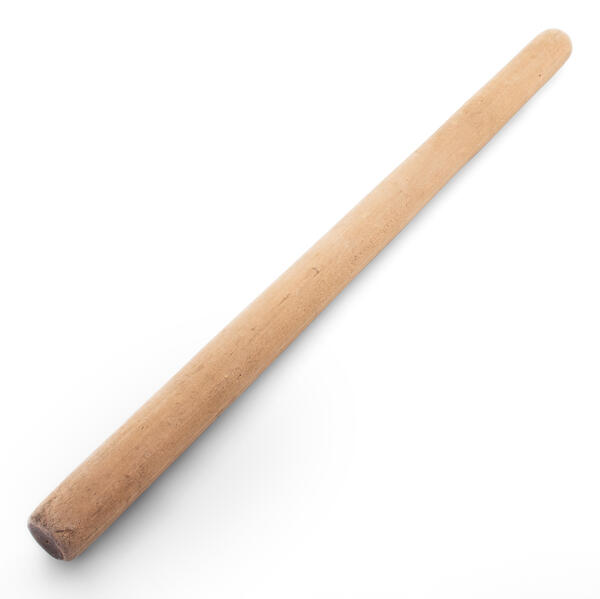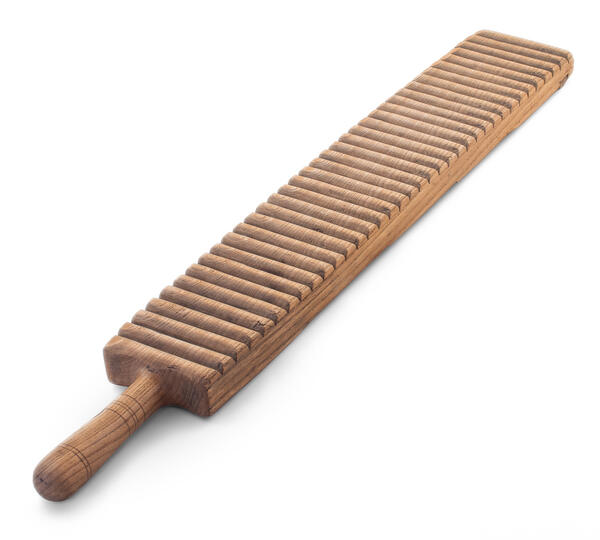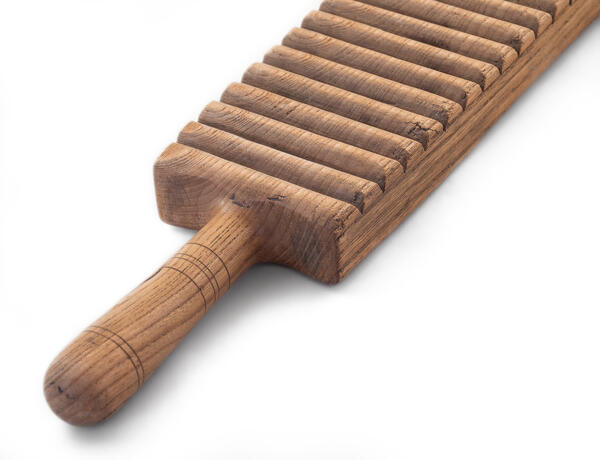The Apartment-Museum of the Ulyanov Family features a rubel and a roller. The rubel is a flat plank with transverse notches along its entire length and a round handle. Its reverse side is smooth. It is made of a single piece of wood. Paired with a rubel is another household item — a roller. It is a long cylindrical stick.
Such devices were necessary in everyday life of Russians in the old days. They were intended for washing and smoothing clothes. The rubel could also be called a paddle, ribrack, pralnyk, granchak, rollout or kachulka, depending on the region, but it was always a single plank with a handle at one end.
The rubel was made of solid wood of different types: rowan, oak, beech, maple, birch or linden. Transverse rounded notches were cut on one side of the plank, the other side remained smooth and was often decorated with carvings.
In different regions, rubels could differ in their shape or decorative elements. For example, in the Vladimir province, the rubel was decorated with geometric carvings, and in Yaroslavl, in addition to carvings, the rubel could also be decorated with a three-dimensional sculpture that protruded above the carved surface and served as a second handle. The shape of the handle could also change: sometimes it was made hollow, and peas and other small objects were placed inside so that the rubel would rattle when rolling out.
The process of smoothing the laundry after washing was as follows: a roller was wrapped with the clothes forming a tight bundle. A rubel was placed on top and rolled forward from the edge of the table, softening and smoothing the fabric. To press the laundry well and at the same time squeeze out excess moisture from it, it was necessary to make considerable efforts. Therefore, in the old days, pressing was considered hard physical labor. This process gave birth to a proverb, “If not by washing, then by rolling”. It means that one can achieve results in all possible ways.





